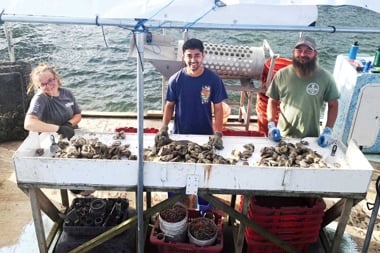
Quinoa grows in Canada? It sure does, and so do pulses, Camelina sativa, wild rice, and hemp. Get to know these five great Canadian superfoods—there's never been a better tine to appreciate the True North's unexpected bounty.
Locally grown and sourced foods appeal to consumers who want to know where their food comes from and how it’s produced. In a perfect world, the growing season would last all year round, and everyone would have a garden in their backyard. Sadly, this isn’t feasible so we rely on farmers to supply our food.
Supporting local farmers and sourcing local food allows us to eat healthy, homegrown foods we can trace from farm to fork. And what might surprise you is that some of today’s most popular non-genetically modified (non-GM) superfoods are grown in Canada.
Camelina sativa
A handful of farmers in Saskatchewan introduced this ancient oilseed to their soils more than 8 years ago, and in 2010 Health Canada approved it as a “novel food.” Camelina sativa is used to produce camelina oil. This healthy oil has a balanced fatty acid profile, an inherently stable nature, and is a good source of vitamin E.
How to use it: Camelina oil is delicious in dressings, dips, and pastas. It can be substituted for olive oil and can be used for cooking at temperatures up to 475 F (240 C), which is similar to refined grapeseed and avocado oils. The Canadian Health Food Association named camelina oil one of its top five 2015 Natural Health Trends.
Pulses
Pulses are dried legumes that include lentils, chickpeas, peas, and edible beans. Canada accounts for 35 percent of the world’s pulse trade with the majority of peas, lentils, and chickpeas grown in Saskatchewan. Alberta also produces those crops, along with beans. Ontario and Quebec grow a variety of beans, as does Manitoba, which also produces peas and lentils.
Pulses are high in fibre, protein, iron, zinc, folate, phosphorus, and some of the B vitamins. They are used as ingredients in foods such as hummus, chilis, curry, crackers, and baked goods. Given their healthy nutritional profile, roasted chickpeas and beans are a popular ingredient in healthy snack foods.
Quinoa
Indigenous to South America, this ancient grain grows well in cool and dry climates. Farmers have been growing varieties of quinoa in Saskatchewan for 20 years due to the area’s growing season and soil composition. Northern Saskatchewan, in particular, provides ideal growing conditions for quinoa, similar to those in South America.
Canadian-grown quinoa is slightly darker in colour and stickier in texture than its Peruvian counterpart and has a lovely almond-like flavour. Quinoa can be substituted for rice in many rice dishes as it cooks up easily, is gluten free, contains essential amino acids, and is a source of protein and fibre.
Wild rice
Many people are surprised to learn that wild rice is an aquatic grass seed and not a true rice. Today’s wild rice is mainly cultivated and doesn’t grow naturally. Canadian wild rice is unique as it grows wild in clear, freshwater lakes and rivers and is native to the Great Lakes of Canada and the northern regions of Saskatchewan and Manitoba.
Nutritionally, wild rice is high in fibre and protein, low in calories and fat, and gluten free. Wild rice pastas and muffin mixes are available in natural health stores. Cooked wild rice has a rich nutty flavour which is sometimes described as smoky, and a chewy texture that complements salads, soups, baked goods, and desserts.
Hemp
Hemp is one of the earliest known domesticated plants and was initially used to make a variety of items such as clothing, paper, and building materials. Hemp was restricted from the food market due to its relation to marijuana, but the Cannabis sativa plant only contains a miniscule amount of tetrahydrocannabinol (THC) and doesn’t cause a psychoactive effect.
Hemp seeds are a rich source of fibre, magnesium, zinc, and iron. Hemp hearts have a lovely nutty flavour and are high in protein and omega fatty acids. They can be used in protein shakes, on salads and cereals, and in desserts. Ground hemp seeds and hemp hearts are easy to incorporate into meals and are widely available in natural health stores. a
Pulse or legume: what’s the difference?
A legume is a plant whose fruit is encased in a pod, such as peanuts, peas, soy, and alfalfa.
A pulse is a member of the legume family, but it refers to only the dried seed. Dried peas, lentils, and chickpeas are examples of a pulse.
Did you know?
Canada is the number one world exporter of lentils and peas.
Rinse before use
Quinoa contains saponins, which give it a bitter taste. They’re usually removed during processing, but if not, they can be rinsed off quinoa with cold water before cooking.




